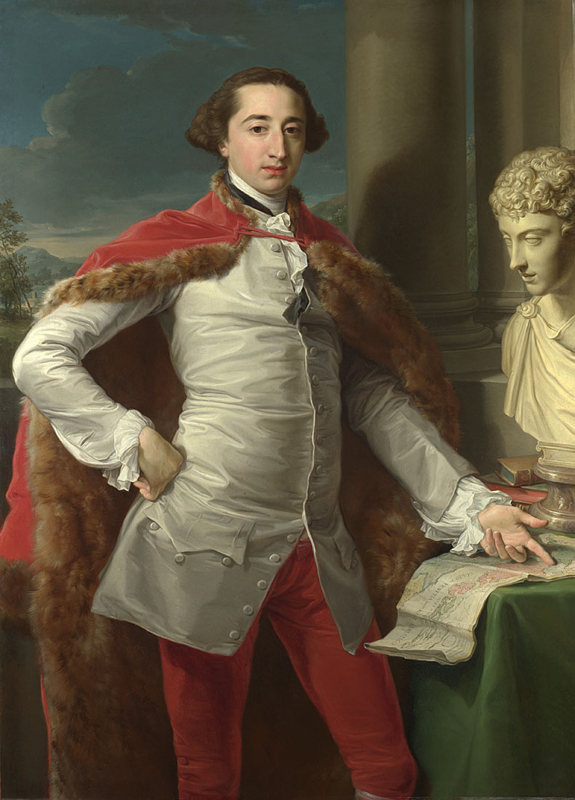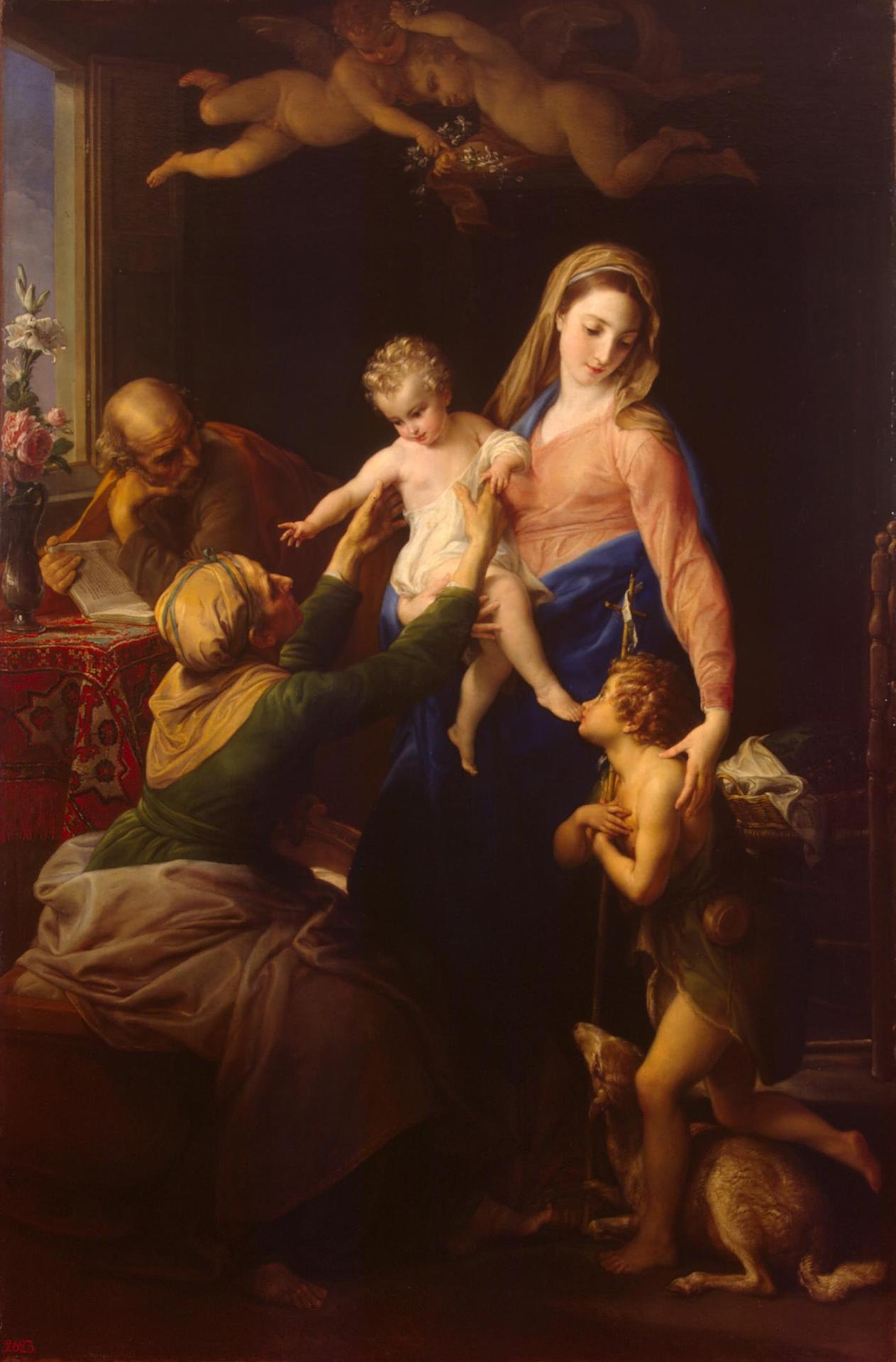Called by some “Italia’s last Old Master,” painter Pompeo Batoni died 4 February 1787 in Rome. Born in Lucca in 1708, Batoni studied painting under Sebastiano Concas and Agostino Masucci while also upholding a fascination with antiquity and with the work of Raphael.
Moving to Rome in 1727, where he stayed until his death on 04 February 1787, Batoni received commissions from popes, princes and foreign visitors of the Grand Tour to Rome. Even though he is famous for his theatrical portraits of British aristocrats combined with classical antiquity (John Talbot, Richard Milles and Sir Harry Fetherstonhaugh, for instance), his work ranges from religious to mythological and allegorical painting.
In Rome, being highly acclaimed, he was associated with the Bohemian painter Anton Raphael Mengs and the Prussian Johann Joachim Winckelmann. His house in Rome (Via Bocca di Leone 25) was his studio, which also included exhibition rooms and a drawing academy. Although he was a celebrated painter of his time, the first exhibition devoted to him took place in Lucca in 1967.
Further reading
Edgar Peters Bowron (2016) Pompeo Batoni: A Complete Catalogue of His Paintings (The Paul Mellon Centre for Studies in British Art) London: Paul Mellon Centre.
Edgar Peters Bowron, Peter Björn Kerber (2007) Pompeo Batoni: Prince of Painters in Eighteenth-century Rome, Yale University Press.
David Jaffé (intr.) (1997) Summary Catalogue of European Paintings in the J. Paul Getty Museum
J. Patrice Marandel (intr.) (1989) Europe in the age of enlightenment and revolution, New York: The Metropolitan Museum of Art.
Listen to an audio commentary about the Portrait of John Talbot in the J. Paul Getty Museum’s collection.
Self portrait, 1773-1774. Galleria degli Uffizi, Florence.
Portrait of John Talbot, later 1st Earl Talbot, 1773, J. Paul Getty Museum, Los Angeles.
Portrait of Richard Milles, 1760s, The National Gallery, London.
Portrait of Sir Harry Fetherstonhaugh, 2nd Bt, 1776, National Maritime Museum, Greenwich.
Diana and Cupid, 1761, The Metropolitan Museum of Art, New York.
Peace and War, 1776, The Art Institute, Chicago.
Esther before Ahasuerus, 1738-1740, Philadelphia Museum of Art, Philadelphia.
Holy Family with Sts Elizabeth and John the Baptist, 1776, The State Hermitage Museum, St Petersburg.







